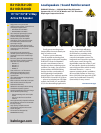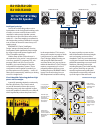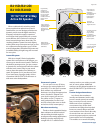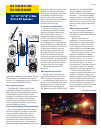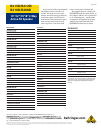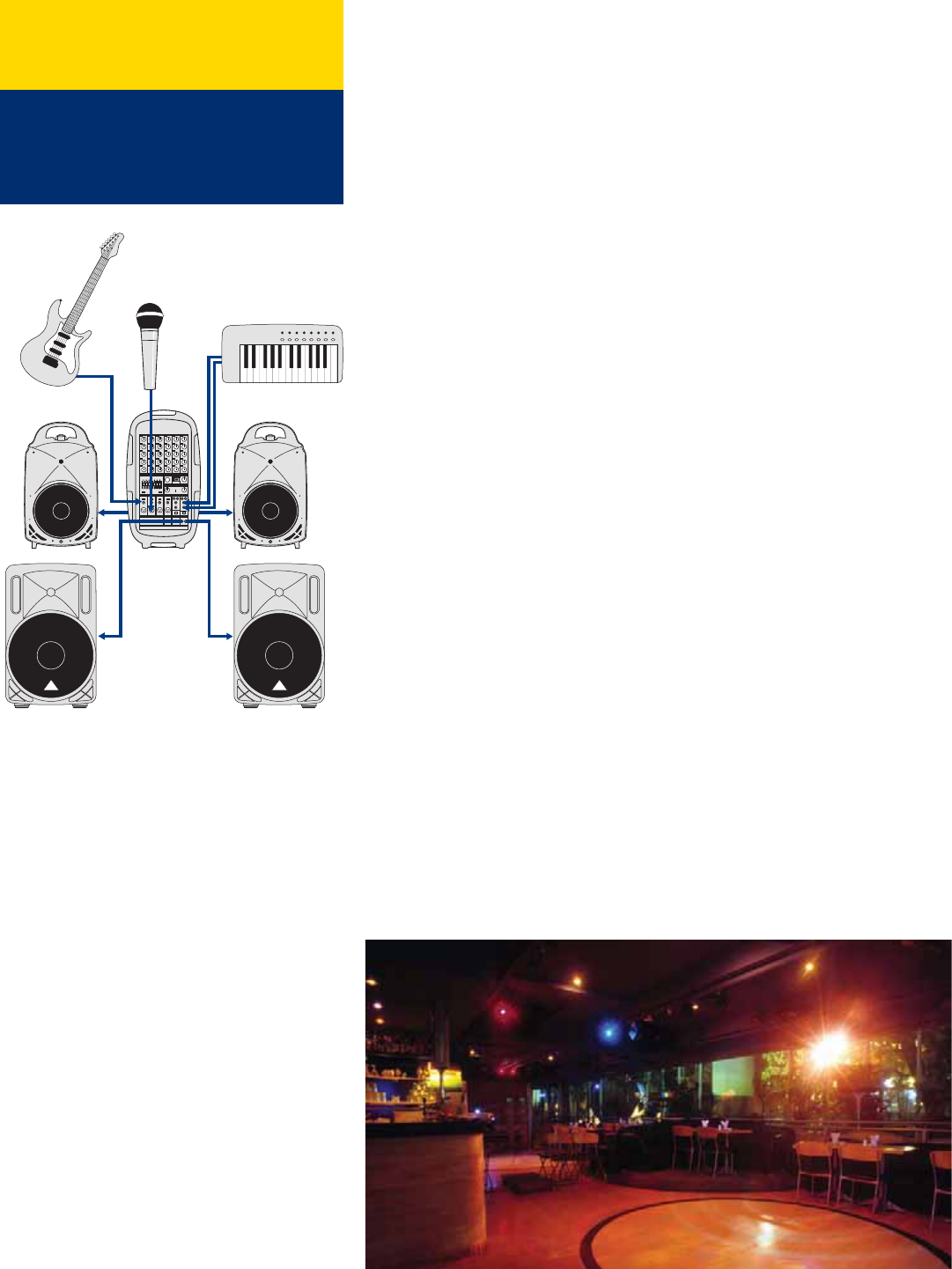
Page 4 of 5
Continued on next page
B215D/B212D/
B210D/B208D
15"/12"/10"/8" 2-Way
Active PA Speaker
attention to detail. For spoken word,
singing or acoustical instruments,
they are un-matched for being able
to articulate complex harmonic
details. In fact, many customers
think it’s the most natural-sounding
speaker they’ve ever heard at
anywhere near the price.
Processor controlled output
Dynamic processing is one of
the best ways to maximize output
without sacrifi cing sound quality.
The D Series’ built-in circuitry
automatically adjusts program
content, allowing the loudspeaker
to operate at extreme levels. It
accomplishes this by reducing bass
output slightly as you approach the
limit of the transducers. This frees up
LF amp and transducer resources,
so that higher overall volume can
be realized. It’s like having a tiny
soundman inside each cabinet
constantly monitoring and changing
output parameters. By making subtle
changes to the crossover frequency
and the audio content, the system
is able to crank out more sound
— without the slightest hint of
distortion.
Massive power to size ratio
Cutting-edge technology and
high-fidelity speakers are not all it
takes to get your message across
— you need power, and lots of it. At
the heart of each EUROLIVE D Series
loudspeaker are two high-current
amplifiers with a total output of
550-Watts for the B212D/B215D and
220-Watts for the B210D/B208D.
They’re capable of driving the
speakers to their maximum with no
distortion — and without speaker
damage, thanks to active internal
protection circuits. Put simply, they
will astound you with their massive
punch, smooth mids and articulate
top-end!
Which speaker do I need?
As you’ve probably noticed, we
make these active loudspeakers in
four diff erent woofer sizes. Which one
is right for you?
Well, let’s start with your
application. Is it spoken word in a
hotel ballroom? Hard rock in a park?
A folk singer or a drum ‘n’ bass DJ?
Loud enough for an 18-year old or
loud enough for your grandmother?
A huge auditorium or a tiny club?
Physics are physics and a 15" low
frequency transducer has almost
40% more surface area with which
to move air than a 12" . A 12" has
30% more area than a 10", and a 10"
has 35% more than an 8" . So the
easiest answer is “Whether to choose
one speaker cabinet over another
depends on your bass requirements.”
If you’re addressing a small
meeting, or demoing the latest “slice-
o-chop-o-vegamatic” at the swap
meet or county fair, the B208D might
be all the speaker you’ll need. But if
you’re providing disco to the masses
at a standing room only nightclub —
or you just need to crank it up louder,
then the B215D may be a better
choice.
EUROLIVE B210D EUROLIVE B210D
EPA900
Keyboard
Electric Guitar
XM1800S
and frankly, make better components, like the
long-excursion LF transducers and state-of-
the-art 1.35" compression drivers we deploy in
each and every EUROLIVE enclosure.
Low frequency response
The EUROLIVE D Series was built with
extended low frequency handling in mind.
With a tuned port, internally braced, injection
molded enclosure, each model’s custom-
designed LF transducer (woofer) really cranks
out tight low end. Keep in mind that bass
response varies according to LF transducer
size, so the larger the speaker, the more bass
you will be able to generate.
Accurate non-fatiguing midrange and treble
Even if your particular application doesn’t
include booming bass, you’ll love the sheer
accuracy of these loudspeakers. Over a
year of design went into a exponential
horn/aluminum dome compression driver
combination that could do justice to loud
hard rock or dance music — yet could also
satisfy audiophiles with its musical timbre and



